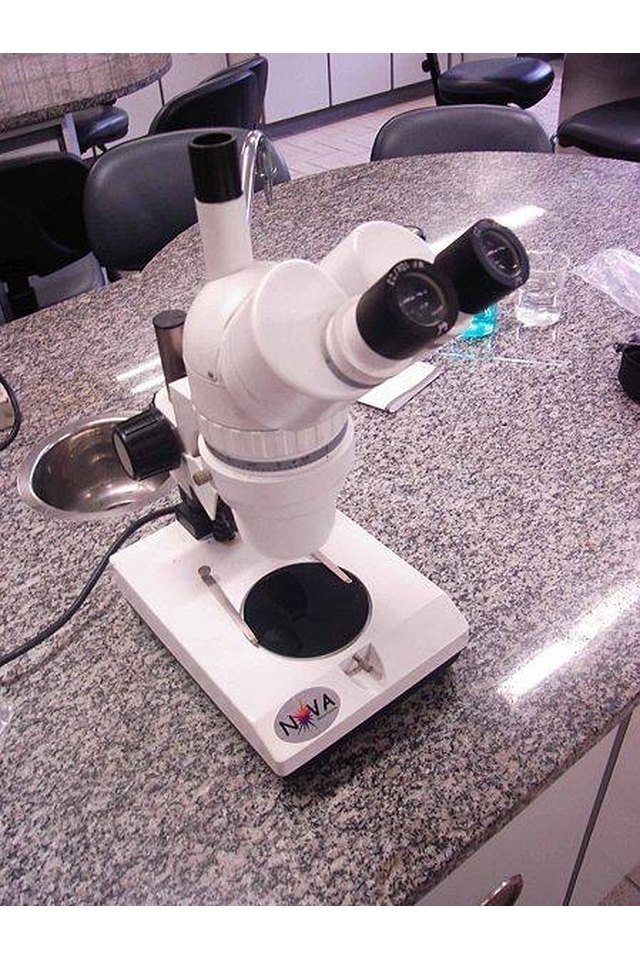What Are the Advantages of a Dissecting Microscope?

All microscopes are used to get a magnified view of a specimen. A dissecting microscope is used to look at objects that are thicker than objects looked at under a compound microscope. Compound microscopes typically give 10 to 40 times magnification. However, dissecting microscopes may only yield 3 to 5 times magnification. The reduced magnification is not a disadvantage because the dissecting microscope is used differently then a compound microscope.
Features
Dissecting microscopes have 2 eyepieces that provide binocular vision. This allows for better focus and less eye strain.
Effects
Binocular vision allows the user to see objects in 3D. This can not be done with a compound microscope.
Field of view
The lower magnification of the dissecting microscope gives the user a greater field of vision. In some cases, the entire specimen can looked at under the dissecting microscope as opposed to just a few cells.
Considerations
Dissecting microscopes can be used to look at live specimens that are not microscopic. No other form of microscope allows this.
Lighting
Since subjects are thicker, they are not illuminated from below on a dissecting microscope. This allows for light to be placed anywhere it is needed to enhance the view of the specimen.
Writer Bio
Howard Altman is a transplanted New Yorker located in Centerton Arkansas. He has over 25 years of experience in the information technology field programming and supporting code. His hobbies include keeping a 1988 Ford F150 up and running and 30 years of Radio Control (cars boats and planes) experience. He has been writing how-to articles since 2008.
